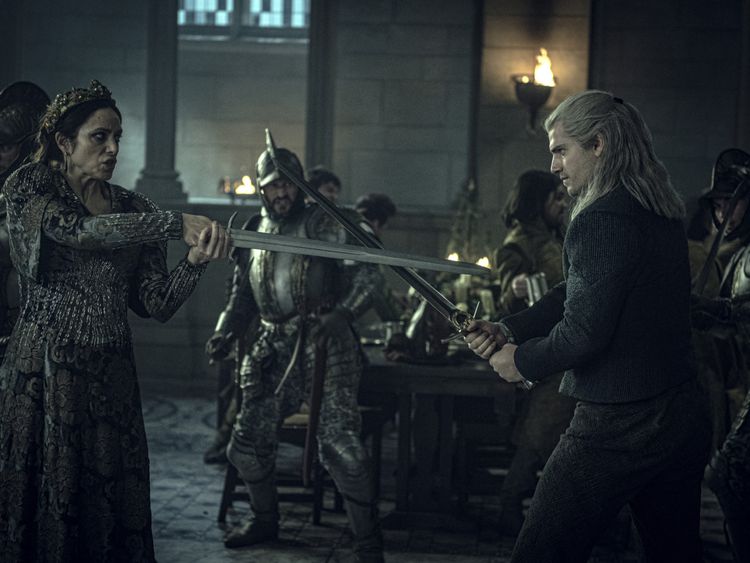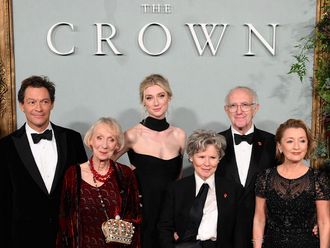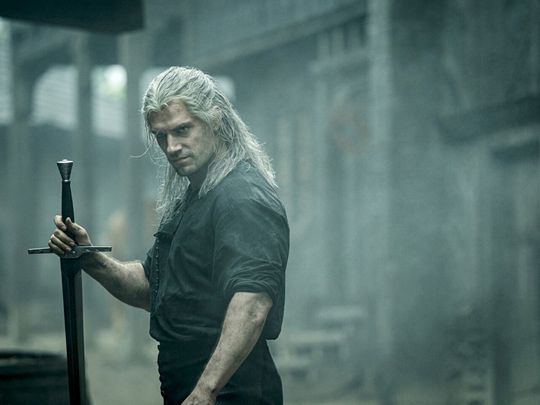
The hottest TV show is, once again, a dark fantasy series based on a best-selling series of novels. And this time, the story’s actually finished before the live action finale (what a 21st century concept!) and it’s even led to a line of video games.
With a second season already on the calendar, Netflix’s ‘The Witcher’ rocketed to the top of everyone’s on-demand entertainment, even reportedly becoming the most in-demand TV show in the world, according to Parrot Analytics.
Author Andrzej Sapkowski became the pride of Poland after publishing a series of stories about Geralt of Rivia, the titular Witcher. The nation is so proud of Sapkowski’s works (and the subsequent blockbuster games that followed), Poland’s prime minister offered the second game as an official state gift during his 2011 visit with US President Barack Obama.
Since the show’s debut on December 20, Witcher books and video games are seeing renewed chart-topping success in their own respective mediums. ‘The Last Wish’, a collection of Sapkowski’s first short stories published in 1993, became the fourth fiction title on the New York Times Best Sellers list in January. And Sapkowski is now regularly one of Amazon’s most popular authors, above Harry Potter scribe JK Rowling.
And ‘The Witcher 3: The Wild Hunt’, a 2015 video game by Polish video game studio CD Projekt Red, once again shot to near the top of Steam’s most-played list. As of Friday afternoon, the game had more than 91,000 Steam users playing the game, and a CD Projekt Red community manager confirmed this is more players than when the game launched four years ago. The title was listed as one of our 10 most influential video games of the decade.
So you binged the show. You’re hearing that the books and games are all great, and you’re hankering for a rare sort of multimedia synergy where, for once, everything from the books to the show is well received. Here’s a little guide to books and games to best familiarise yourself with the lore of Sapwoski’s weird, bloody, sexy and sometimes satirical fantasy world.
Books
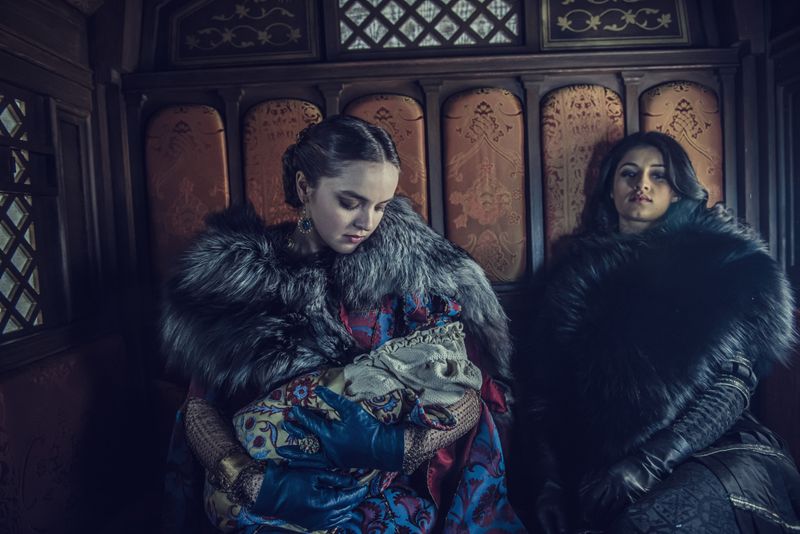
As The New York Times bestseller list indicates, many readers have already figured out the best starting book: ‘The Last Wish’. It was published after the first book of the ‘Witcher Saga’, but rest assured, this is the best starting point.
Each of the short stories were published in fantasy fiction magazines in Poland before they were compiled into book form in 1993. The English edition, finally released in 2007, made its first appearance on the New York Times Bestseller list in 2015, after the release of The Witcher 3 game.
Like many short story collections, ‘The Last Wish’ is a quick and breezy read, and it’s filled with action as it follows Geralt through flashbacks of past adventures, many of which were adopted for the show. Moreover, you get more details about the world’s politics and warring factions, which add more context to the show. The Netflix series scaled back a lot of the politics, which avoids even more overt comparisons to ‘Game of Thrones’.
‘Sword of Destiny’ should be your second read. The biggest criticism lodged against the show is its confusing setup of different timelines. Showrunner Lauren Hissrich has opened up her ears to fan and critic reaction, responding on Twitter about some of the biggest differences. Much of it was removed for the sake of introducing Ciri, one of the three main protagonists, earlier in the show. ‘Sword of Destiny’ often competes with ‘The Last Wish’ as the fan favourite book and offers more context to Geralt and Ciri’s bond.
After that, you can just read the Witcher saga in the order they were published: ‘Blood of Elves’, ‘Time of Contempt’, ‘Baptism of Fire’, ‘The Tower of the Swallow’ and ‘The Lady of the Lake’. There’s no telling how faithfully the show will recreate the books, particularly since certain important characters from the book have already seen drastic changes in the show, and other new characters have been introduced. The sorceress Triss Merigold, for example, isn’t introduced until ‘Blood of Elves’, but she’s given a prominent part in the show, thanks to her elevated role in the games.
But if you don’t want to wait years until the show ends, you can read through to the end of Geralt’s story at ‘The Lady of the Lake’, or at least it was the end of his story, until the video games came along.
———————————————————
Games
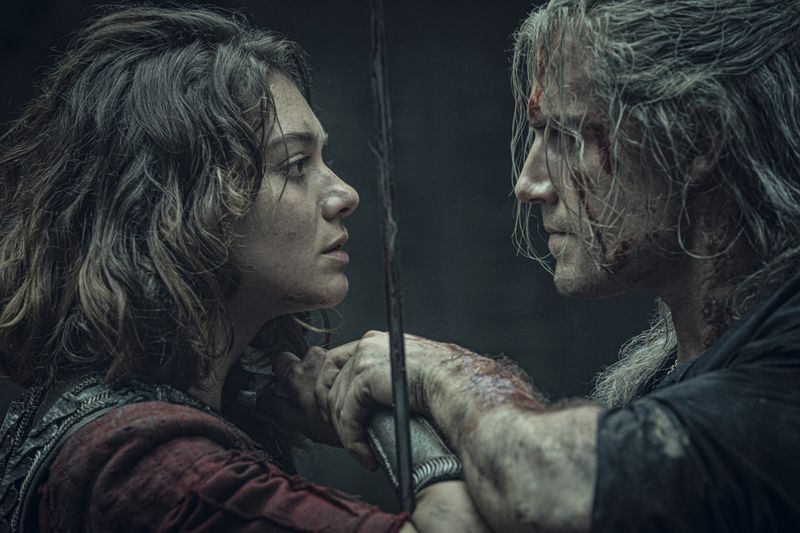
I’ll lead with this advice: Don’t be afraid of starting with the third Witcher game. You’re probably best starting off with it anyway.
CD Projekt Red won the right to continue Geralt’s story after ‘Lady’. Although Sapkowski doesn’t consider the games canon to his world, he’s more talking about the distinction between books and games. He’s expressed happiness with how the games treat his characters, and the developers took great pains to replicate the speech patterns, characteristics and appearances from the books.
The first Witcher game was a PC exclusive from 2007, and although it was a tech benchmark at the time, it has not aged well. While its story presentation is still high quality, there are simply too many antiquated game systems for it to be enjoyable for anyone but the most hardcore (and patient) Witcher fans. Even on a high-end PC, the game’s outdated engine struggles. Unless you’re really committed, your time is better spent watching a playthrough or a cutscene compilation on YouTube.
‘The Witcher 2: Assassins of Kings’ is a different proposition. The elevator pitch: Think Mass Effect’s branching story lines mixed with a jankier version of ‘Dark Souls’ combat. Unlike the third game, ‘Witcher 2’ is more linear. And unlike the first game, it focuses more on the political end of the universe, rather than the monsters and magic. Although the game isn’t nearly as good as the third, the plot drastically changes a third of the way through depending on your decisions. If you’re a fan of adventure games where your decisions leave indelible marks on the world, ‘Witcher 2’ might be worth overcoming the frustrating combat.
‘The Witcher 3’ comes at the highest recommendation. It is so good, in fact, it makes the other two games nonessential. CD Projekt Red wrote Geralt as an amnesiac in the first two ‘Witcher’ games as a method to write around introducing the universe to the player. By the third game, Geralt’s memory is restored, and he’s basically back to who he was at the end of ‘The Lady of the Lake.’ The story also introduces characters only previously seen in the books.
The game’s main quest is meaty and well written, but its many side quests are arguably better. You can easily ignore the main mission and familiarise yourself with a huge chunk of the Witcher’s continent, exploring three large maps and role playing as a freelancing Witcher. Each story is like a self-contained episode of the show, offering similar moral quandaries, except you get to choose how Geralt gets out of situations.
And if you’re a novice at games, its easy mode should be a cakewalk for casual players.
And as Forbes writer Paul Tassi wrote, this game already provides the best possible solution for an ideal ending, by letting you decide. The main ‘Witcher 3’ story ends on a saga-satisfying note. But the game’s subsequent downloadable content, Heart of Stone and Blood and Wine, provide even more closure, further rewarding players with even more arc-ending character moments.
In other words, there is no risk for a finale fiasco like ‘Game of Thrones’ or ‘Star Wars’. The best endings already exist.



